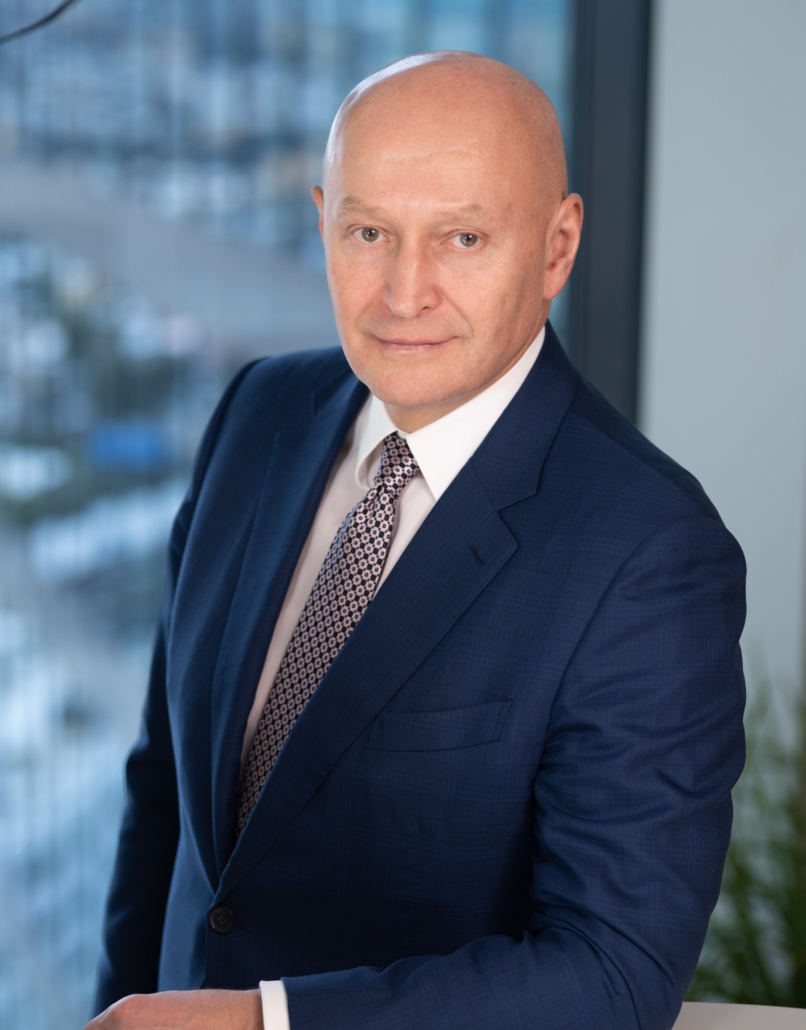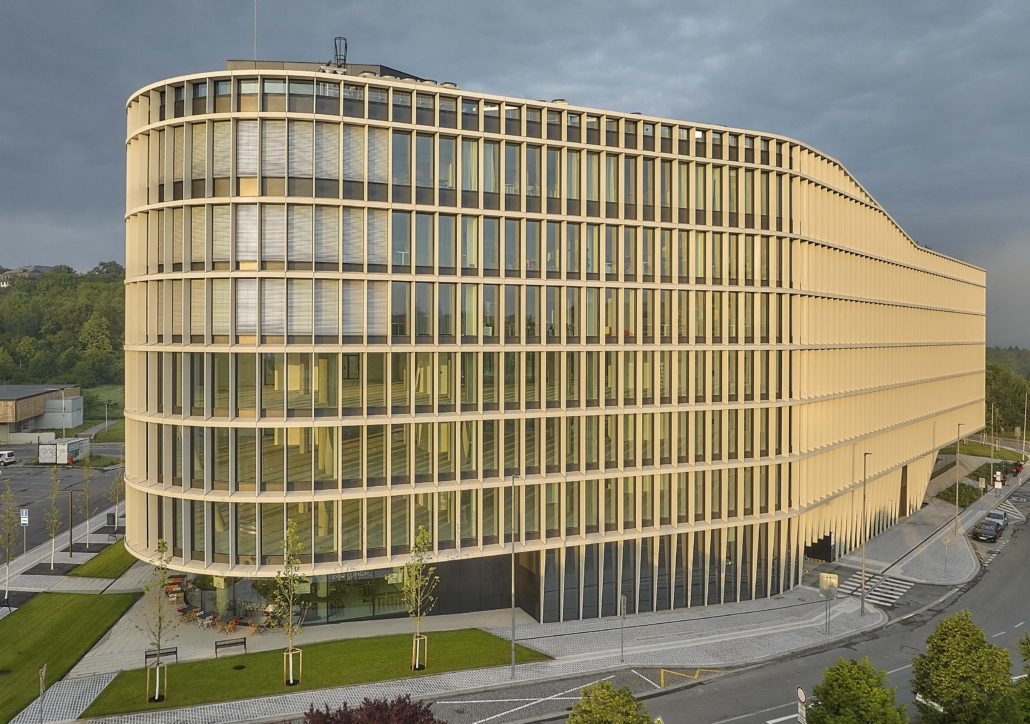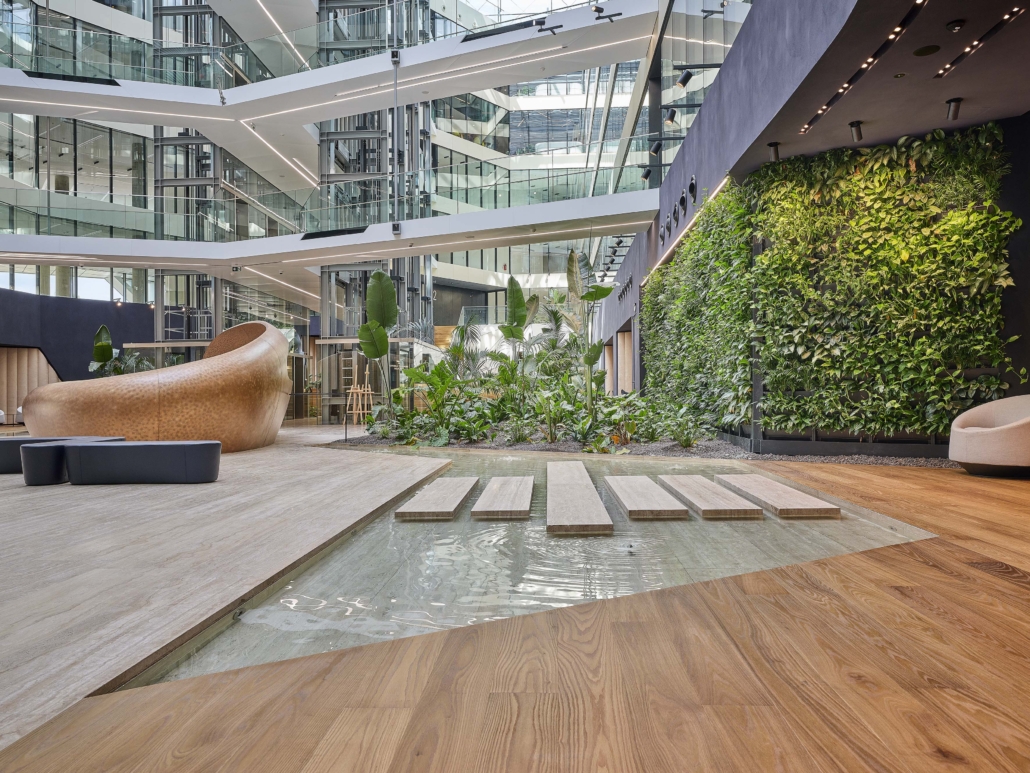As an urban developer, Passerinvest Group puts generosity into buildings
Passerinvest Group is a purely Czech investment and development company founded in 1991 by Radim Passer. As an urban developer, builder and investor, the company has, since 1996, mainly been associated with Brumlovka in Prague 4 and, in recent years, with the Roztyly area in Prague 11.
We asked Radim Passer, the founder of the company and Chairman of the Board of the Passerinvest Group, to evaluate the past period and outline some plans for the future.
 How has the Passerinvest Group been doing in the last decade?
How has the Passerinvest Group been doing in the last decade?
The value of the company has shifted. I believe it will be in the order of over 100% over the last decade. It should also be the case with many other companies that have been established in the market for some time. This is the criterion I have to follow as a shareholder. I think that even some companies that are larger than us, though in other fields of business, also achieve at least the same numbers.
You must be satisfied with such a result…
It is certainly nice to see that the company’s value grew by 10% per year, but in today’s global world, it is no wonder. On the other hand, it is good that we are growing, but it is not the most important criterion.
And which one do you think is the main one?
In my opinion, the most important criterion consists in knowing that we are doing work that not only I enjoy, but also my colleagues, and that it benefits someone else. From this point of view, the decade was certainly a success. It started with the completion of Delta in 2015, one of the largest administrative buildings in the Czech Republic with an area of approximately 43,000 sq m. At that time, we had a strategy of buying back Brumlovka buildings that we had once sold off. In total, we managed to buy seven out of nine. Two of them were completely reconstructed – Buildings A and B. Basically, they were the first administrative buildings that were built in the Czech Republic after the revolution and underwent reconstruction at the same time.
What has influenced you the most in the past decade?
The last few years have been marked by matters that go beyond any control of people from business environment – first the Covid pandemics and then the war in Ukraine, which has, in many ways, been reflected in the key parameters we follow. Covid led to the home office, the war in Ukraine caused interest rates to rise and of course valuations to fall. All of this affects the commercial real estate market. Even so, I think that – even if the decade is supposed to end in the current weeks and/or months – we have not lost our will to work, to be reasonably brave and to take risks. Even in these difficult times, when the numbers do not turn out the way we would expect them to, we commenced the construction of a new administrative building for the free market, which has not happened in Prague for more than two years.
What do you consider to be the major milestone in your business?
The key milestone in my business was the year 1998, when I accepted Jesus as my Lord and Savior. This changed my priorities in life and without a doubt it had a very significant effect on my business. Even before that, I tried to implement projects to make them nice as part of my thought schemes. But the level of generosity has increased manifold since then. Around 2000, when we were already experienced with global corporations, we began to realize that our mission is to create a working environment for people. Some of them spend a third of their lives, including sleep, working for corporations. There are 168 hours in a week, and extremely busy people work over 50 hours a week. This led me to create a friendly working environment for them. Every commercial developer commonly tries to build a building that meets current standards, but we add something extra to that.
Passerinvest Group has always been a pioneer in creating a pleasant working environment in Prague. This includes relaxing green roof gardens or an offer of quality gastronomy, etc.
We created the first roof garden in 2003 – it’s been over 20 years now. It is an investment in beauty worth 1.5 to 2% of the total cost of the project. In other words, yes, it is money, usually tens of millions of crowns at each stage of construction. It will not jeopardize the project economically, and if you do it nicely, people will like it there. And if people like it there, so do the corporations. This sense of generosity was naturally further enhanced by the fact that, in addition to ‘ordinary’ development, we also engaged in urban planning, which also set us apart from the competition. We are constantly and intensively developing one locality, gradually adding a little more into it, but it is basically still about Brumlovka.
How many people are currently working there, i.e. in Brumlovka, and what is the occupancy rate?
According to the air conditioning performance, the buildings have the capacity to accommodate around 20,000 people, but companies usually do not fill that much space. No new administrative buildings have been added since the Delta building was completed, so there are currently about 12,000 to 13,000 people working there. The home office continues to reverberate, so realistically, there are about 7,000 to 8,000 people present in the area per day. Before Covid, it was around 4,000 more. In the future, we anticipate the aforementioned 20,000 people. As for contractual occupancy, it is in the order of 98% or more on the 210,000 sq m office space. The physical presence of people in the premises is also influenced by the corporate policy of the individual tenants, as some corporations have decided that all employees must be present in the offices. And others have a problem getting people back to the office, because they got used to working from home during Covid.

 The Brumlovka complex also includes apartments. What forms of housing are there already or are being planned for the future?
The Brumlovka complex also includes apartments. What forms of housing are there already or are being planned for the future?
After the completion of the Hila multifunctional building, we should have approximately 300,000 sq m of rentable premises there. This number corresponded to the expected final size of the completed Brumlovka complex in the first half of the 1990s. Today we know that if Brumlovka was completed in its entirety, it could reach up to 0.5 million sq m. I want to point out that of this 300,000 sq m, approximately 230,000 sq m will be intended for offices (of which 20,000 sq m in the Hila building). The remaining premises will include shops, services, a Christian-family-type school as well as apartments. The already completed apartments have been built for sale, but there are not many of them; around 250 if we consider the higher quality. There are approximately 150 apartments of medium quality there from the past, so in total it comes to about 400 apartments. Most of the owners of the higher quality apartments actually live there. The Hila and then Orion buildings will offer a little over 200 rental apartments in two stages, which will be part of the administrative complex. These apartments could serve the corporations for their employees, who – as we have found out – are of more than 40 different nationalities. Of course, not everyone wants to live right where they work, but for some of them it will be clearly advantageous.
You also have experience with the development in Ostrava…
The Nová Karolina Park project made us really happy. For one thing because of what it looked like – CMC architects designed a beautiful house, and it was eventually also rented well. Although it took longer, for a year and a bit, we prayed and fasted so that there would be progress in rentals in Ostrava. In the end, it turned out economically even better than we expected, and we sold the building.
The opening of the Roztyly Plaza administrative project attracted a lot of attention.
We are also happy with Roztyla Plaza. I personally rank it among the top three administrative buildings in the whole of Prague. At least according to my subjective criteria, as I know the other administrative buildings. I think that Roztyly Plaza worked out wonderfully for Mr. Aulík and his team. He has created a wonderful atrium there. Although we also had a nice big atrium in the Gamma building, for instance, this one is even better. Of course, the roof garden with breathtaking views of Prague and Krčský les has also turned out beautifully. Roztyly Plaza makes us happy, and I believe that it will mainly make the people who are to work there happy.
But this is not your last project in the Roztyly area in Prague.
Of course, we have other plans in Roztyly. Now (after years of hard work in the field of approval processes, combined with complex acquisitions and with partial but almost endlessly long zoning changes) we have really moved on. Finally, we are in a situation where we can continue planning subsequent construction. That is why we are happy that Roztyly Plaza is completed and that we have a valid building permit for another significant administrative building in Roztyly, the Sequoia building, which will have over 33,000 sq m. We want to commence construction in the coming months. First of all, we have to prepare the infrastructure, which will be followed by the construction of the new building. Now we got the opportunity to complete the EIA for the residential part of the Arboretum in Roztyly. This is, so far, our biggest residential project. It will include approximately 600 residential units, and we would like to commence the construction in early summer 2026, if God permits. That means that ‘our’ Roztyly comprises three stages – one completed and two in preparation.
And what is the future of Brumlovka?
We also have three more stages waiting for us in Brumlovka and, just like in Roztyly, we are preparing almost 100,000 sq m there. It is the aforementioned Hila building, which is under construction, and then the Orion building, which will have a similar structure to Hila, only a little bigger. So, it will mainly comprise administration, plus rental apartments and some services. We naturally always try to arrange for a sufficient number of spacious parking spaces, because we consider it something that simply belongs to quality development. Then there is the Omega building, which is in a stage of a completed acquisition with the state after 26 years. Once the transaction was concluded, we immediately started the approval process because we already had the project documentation ready. We would probably like to commence the physical construction in 2026. In total, this should represent approximately 190,000 sq m in both locations. I think that, if God permits, these beautiful stages will really enrich Prague. They should be beautiful not only from architectural point of view, but of course also thanks to their surroundings, in which we will not be afraid to invest.
Does this correspond with the prognosis of the increase in the number of inhabitants to two million?
Nowadays we already say 2.5 million inhabitants. If people think realistically and not just about what some statistical reports say, they know that Prague does not only have 1.25 million inhabitants, but 1.5–1.6 million. If the Czech Republic is to be a country for 15 million people in order for it to prosper sustainably and in the long term, which none of our governments have yet understood, Prague must be a metropolis for 2.5 million inhabitants.

Arnošt Wagner
Photo: Passerinvest Group archive




Leave a Reply
Want to join the discussion?Feel free to contribute!